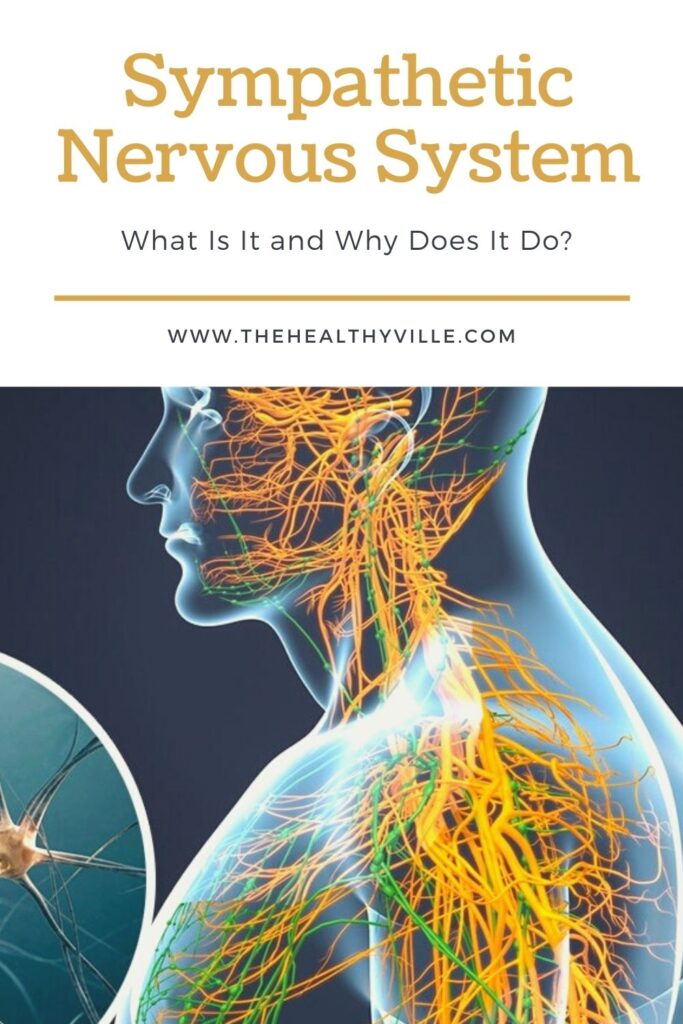Sympathetic nervous system… sounds made up? Well, it is not, and it actually plays an important role. Find out all about it!
How does the body respond to stressful situations? Why does the heart beat suddenly and the body sweat in the face of danger? This response triggers whenever there’s a threat, whether it is simply a potentially embarrassing situation or a truly frightening one (such as being attacked by a stranger).
When does the fight or flight response originate? This response is caused by the sympathetic nervous system, which is responsible for helping humans deal with stress.
The sympathetic nervous system (SNS) constitutes one of the parts of the autonomic nervous system and contains a sensory and a motor component. This means that the SNS is responsible for regulating functions such as cardiac activity, breathing, digestion, etc.
The brain, therefore, is responsible for actions such as thinking, speaking and walking, while the autonomic nervous system for other functions, thus promoting a balance in the body.
Divisions and functions of the autonomous system
- Sympathetic nervous system. It stimulates your fight or flight response, a physiological response to a pernicious event (threat to survival).
- Parasympathetic nervous system. It allows you to maintain normal functions (such as digesting and keeping the body at rest).
Structure of the sympathetic nervous system
The transmission of signals in the system happens through a network of nerve cells, neurons. There are two types of neurons:
- preganglionic neurons – with short fibers from the thoracolumbar segments of the spinal cord. These communicate with the ganglia adjacent to the spinal column, synapsing with the longer postganglionic neurons.
When they synapse with ganglia, they release a chemical (neurotransmitter) called acetylcholine. This activates receptors on postganglionic neurons.
- postganglionic neurons – these release norepinephrine, which targets adrenergic receptors in various organs and tissues. Stimulation of these receptors triggers fight or flight responses.
Еxceptions
There are two exceptions to the processes listed above. These are the postganglionic neurons located in the sweat glands and the chromaffin cells found in the adrenal medulla.
Postganglionic neurons discharge acetylcholine to activate muscarinic receptors, except on the palms of the hands, soles of the feet, and other areas with thick skin. In these areas, norepinephrine acts on adrenergic receptors.
Chromaffin cells found in the adrenal medulla are equivalent to postganglionic neurons. Preganglionic ones, on the other hand, communicate with chromaffin cells, stimulating them to release epinephrine and norepinephrine into the bloodstream.
Hormones behind sympathetic nerve activation
The sympathetic nervous system releases two hormones when you’re under stress. This results in an “adrenaline rush,” or a sense of urgency during stressful conditions. These hormones are epinephrine and norepinephrine, which help the body function optimally during such events.
Epinephrine, better known as adrenaline, is a hormone that is secreted in the adrenal glands. It is released in situations of stress, danger or fear. It is responsible for preparing the body for these situations: it increases blood pressure, glucose and sugar, dilates the bronchial tubes and accelerates the heartbeat.
Norepinephrine, or noradrenaline, is another hormone that has an excitatory effect, maintains wakefulness and consciousness, and is also responsible for the body’s fight and flight response. Thus, it increases blood flow to the muscles to enhance motor response.
Once the sympathetic nervous system activates, there’s a release of norepinephrine preparing the body for the initial stages of stress. If the stress is quickly disappears, bodily functions return to normal.
What happens upon activation?
When a stressful situation happens, the sympathetic nervous system automatically activates. Upon activation, other functions get active, almost simultaneously, too, such as:
- On the one hand, the relaxation of the bladder, which allows you to retain urine while stressed.
- On the other hand, the airways (bronchioles) in the lungs are enlarged to allow more air in, which increases the supply of oxygen to the blood.
- This simulates the adrenal glands to release norepinephrine and epinephrine, responsible for reactions associated with stress.
- There is also an increase in heart rate, translated into a greater delivery of oxygen and nutrients to the brain and muscles, preparing them for stress.
- It also slows down digestive activity to help conserve the body’s energy and it can defend you against stress.
- An increase in glucose, released from the liver into the bloodstream to provide more energy for the muscles.
- Lastly, pupils also dilate, which happens when we’re happy or under a lot of stress.
When the event ends, the sympathetic nervous system functions return to their resting state. This allows the heart rate to normalize, breathing to slow down, and body functions to return to a balanced state.
Don’t forget to SHARE all about the sympathetic nervous system with your friends and family on your social networks!

